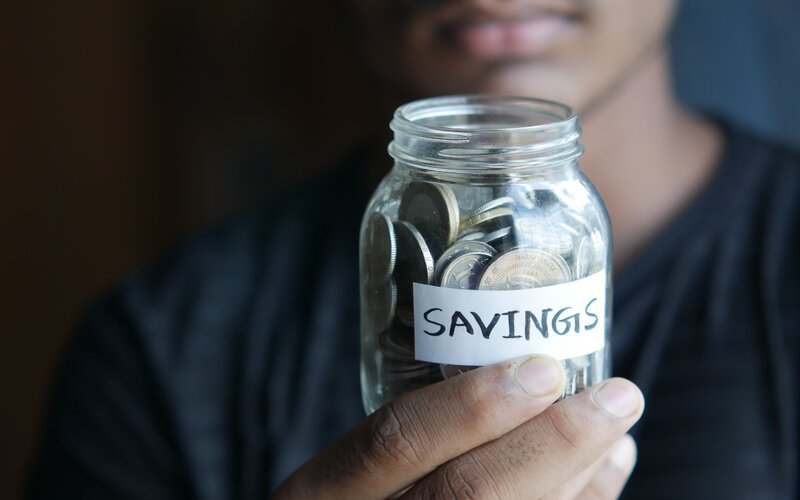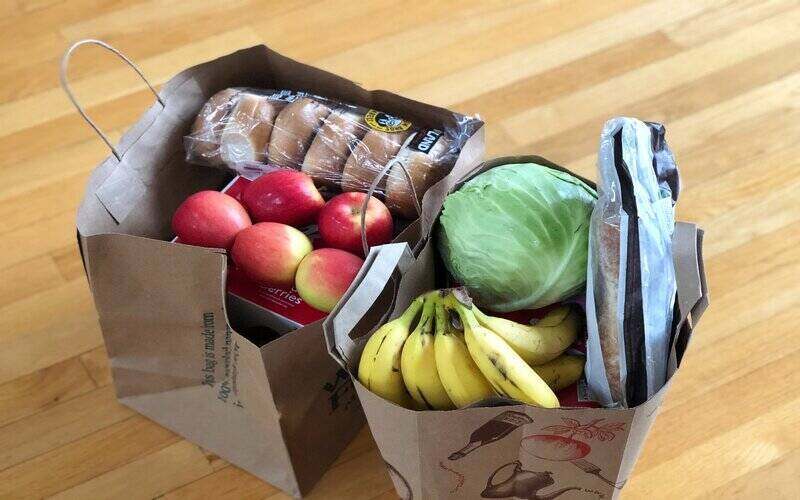We all like saving money. After all, it’s the entire premise of Savings.com.au.
But how many of us actually have a budget? Despite what you may think, budgeting doesn’t need to be this big, scary thing. It’s simply a means of tracking your income and spending.
What is a personal budget?
A personal budget is a detailed monthly (or fortnightly) plan that details exactly where your money is coming from, how much you’ve got, and where it’s going. The word ‘budget’ is often associated with restricted spending, rather than a way of spending your money more efficiently.
Why is budgeting important?
Creating a budget helps you to identify common pitfalls like overspending. Even better, it allows you to stay on track to meet your short and long term financial goals.
According to a study by UBank, a whopping 86% of Australians have no idea what their monthly expenses are. The most common reason? Respondents to the survey said it was “too hard to calculate the expenditure”. Living without a budget may seem like a pretty laid back approach to money, but 59% of Australians without an awareness of their expenses admitted their current financial situation causes them to lose sleep. Sounds anything but relaxed if you ask me.
The good news is it’s actually not that hard to get on top of your finances. It all starts with learning how to budget and this is a general guide to doing just that.
How to budget and save
What’s in this guide:
- Calculate your take-home pay
- List your expenses
- Split those into fixed and variable expenses
- Find a budget planner that will suit you
- Find a budgeting style that works for you
- Review your budget
- Create your savings plan
- Use a high-interest savings accounts
- Automate your savings
- Be disciplined
- Leverage micro investments
1. Calculate your monthly (or fortnightly) take home pay
Income can come from many different sources. This could just be your salary or from other sources like rental income, shareholder dividends, side income, or government assistance. Write down your total income (after tax) as a monthly amount. If you’re paid fortnightly, it may be easier to plan your budget over your pay period. If you work a regular nine to five, this step should be as easy as looking at your payslips. If your income is more irregular than that (say, you’re a casual employee or freelancer), look through records of your last year or two of income. What’s the most amount you made in a month? The least?
As a general rule, it’s best to create a budget based on the least amount of money you’ve made in a month because you can mostly assume you will make more than that moving forward. But you should still base your budget on the least amount you made to have that margin of safety.
Need somewhere to store cash and earn interest? The table below features savings accounts with some of the highest non-introductory interest rates on the market.
Provider | |||||||||||||
|---|---|---|---|---|---|---|---|---|---|---|---|---|---|
| 0 | 200 | 0 | $product[$field["value"]] | $product[$field["value"]] | $product[$field["value"]] | More details | |||||||
| No monthly fees | Save Account
| ||||||||||||
Save Account
| |||||||||||||
| 0 | 1000 | 0 | $product[$field["value"]] | $product[$field["value"]] | $product[$field["value"]] | More details | |||||||
Savings Maximiser (<$100k) | |||||||||||||
| 0 | 1000 | 0 | $product[$field["value"]] | $product[$field["value"]] | $product[$field["value"]] | More details | |||||||
Boost Saver | |||||||||||||
2. List your expenses
Now for the fun bit, listing all your expenses! These may include:
- Rent or mortgage repayments
- Car loan repayments
- Home insurance
- Car insurance
- Credit card repayments
- Private health insurance
- Utilities such as electricity, water and internet bills
- Groceries
- Education expenses
- Travel and petrol
- Mobile phone and data
- Pay TV and music subscriptions
- Gym memberships
- Entertainment
- Any regular medications
Don’t forget to include any expenses you may pay for on a quarterly or annual basis, like car registration and servicing, or property rates, etc.
3. Split those into fixed and variable expenses
You should then divide the expenses above into fixed and variable. You don't have to call them 'fixed' or 'variable' expenses - you might like to call them 'essentials' and 'non-essentials', or even 'must haves' and 'like to haves'. Either way, divide up your expenses based on whether you really need them, or you can go without.
But as a premise, your fixed expenses generally stay the same month on month (rent or mortgage repayments, car loan repayments, home insurance, gym membership, etc). On the other hand, your variable expenses change from month to month (groceries, petrol, entertainment, electricity bills, etc) so you’ll need to average these out.
4. Find a budget planner that will suit you
The decision on which tool to use to collate your budget is personal and entirely up to you. Some people prefer the old school pen and paper method, while others prefer to use Excel spreadsheets or a budget calculator.
There are plenty of smartphone apps that will budget and track every dollar you spend. Since you can enter your spending as you go, apps are probably the easiest and most efficient way of monitoring and tracking your budgeting and spending. Most banks have useful budget/savings planners and calculators as well, so it’s worthwhile checking with your bank to see what they’re offering.
5. Find a budgeting method that works for you
The mere mention of the B word can be enough to make some people cringe. But there are a few budgeting techniques you can try:
The ‘buckets’ or ‘percentage’ method
If you’ve ever read The Barefoot Investor (or any number of other finance books), you’ll have heard of this method.
In The Barefoot Investor, author Scott Pape suggests the following percentage splits:
- 60% to your ‘Blow Bucket’ – which is for everyday expenses like your rent, home loan repayments, utilities, and food.
- 10% to your ‘Splurge Bucket’ – which is for things that make you feel good, like socialising or buying new clothes.
- 10% to your ‘Smile Bucket’ – which is used for savings for fun, longer-term goals like a holiday.
- 20% to your ‘Fire Extinguisher Bucket’ – which is also for your long-term savings goals, but the less fun ones (house deposit, debt, paying off your mortgage quicker).
The ’50/30/20′ method
This method is basically a simplified version of the buckets method above. The split, in this case, is that you spend 50% of your income on your needs and necessities, 20% on savings or debt payments, and 30% on wants like entertainment, eating out, shopping, and travel.
Obviously, the method is pretty much the same in both cases, it’s just a matter of working out what percentage splits will work for you.
Pay yourself first
The biggest goal with this method is saving. Instead of setting up categories that cover all your expenses, you focus on an ambitious savings goal.
For example, you choose to save 30% of your income. This is immediately deposited into a high-interest savings account. The leftover funds can be allocated wherever you please. Obviously, this method would work if you’ve got a specific savings goal in mind, like a house deposit. But it does leave you at risk of overspending the rest of your income and then falling short if a bill comes up.
The zero-based budget
This budgeting method is great if you’re a meticulous planner who likes to know where every single dollar goes. If you’re not, you’ll probably find this method way too full on.
Essentially, you take your monthly income and give a job to every single dollar. So a certain amount goes towards food, another amount is your rent payments for that month, another portion goes towards saving up for a house deposit – until there is nothing left. Every single dollar is accounted for. This method allows you to be completely in control of your money – but as I’m sure you can imagine, it would be quite time consuming to keep track of where every single cent of your money goes.
Create your own
If none of the methods above have tickled your fancy (and there are plenty of other budgeting styles out there that I haven’t mentioned in this article), you can create your own by using a combination of any of the above.
When it comes to budgeting, the trick is to make it as easy as possible for yourself, otherwise you won’t bother doing it. Find a system that will work for you.
6. Review your budget
Now that you’ve got your budget sorted, it’s not a case of ‘set and forget’. It’s important to review your budget every three to six months because your circumstances can (and probably will) change. You might receive a promotion at work and suddenly your income goes up. Or your living arrangements change, you sell your car, finally pay off your mortgage…
If you’ve crunched the numbers and realised you’re still spending way more than you earn, it might be time to review your spending patterns and see where you can make cutbacks. Was your original budget realistic? Maybe you were a bit too optimistic and tried to go in too hard and fast. Take baby steps – if it means putting away $200 a week instead of $300, it’s still a start.
7. Create your savings plan
Once you’ve got your budget down pat, the leftover money can be put towards your savings.
There’s no such thing as a ‘one size fits all’ savings plan – it depends on your income, your expenses, your goals, and your circumstances. What works for one person might not work for another. But as a general rule, you should have long and short-term savings goals, which can be broken into the following three categories:
- Emergency
- Retirement
- Personal
Emergency fund savings
Your emergency savings should be your first priority short-term goal. An emergency fund is something everyone should have, yet a lot of people don’t.
A study by Citi found that 36% of people had less than $1,000 in savings for emergencies, and one in 10 faced the prospect of going into debt to pay for things. It will depend on your circumstances, but generally, you should aim to have anywhere between three and six months of expenses squirrelled away – enough to cover you if you immediately lost your job.
To get started, read our article on setting up an emergency fund.
Retirement savings
“But my employer already contributes to my super fund”! I hear you say.
Even though your employer is required to contribute towards your superannuation fund, relying on their contributions and the Age Pension alone could easily leave you without enough money for a comfortable retirement. You can ask your employer to direct a portion of your salary into your super fund – this is what’s known as salary sacrificing.
You can typically withdraw from your super fund if you're in an emergency. There are even government schemes - such as the First Home Super Saver Scheme - that are specifically designed to help you save money through your super.
Personal savings
Your personal savings account is where you house any income that’s left after you’ve taken care of all your responsibilities. It’s also where you should save for anything specific, like a house deposit, a car, or that end-of-year overseas holiday you’ve been meaning to take.
8. Lock your savings away into a high-interest savings account
You might want to lock all those hard-earned savings away into a high-interest savings account.
High-interest savings accounts are designed to help you grow your savings faster – the higher the interest rate, the quicker your money will grow. On the other hand, if you’ve got money locked away in a savings account with a low interest rate, the value of your money could be going backwards over time because of inflation. In most cases, you’ll usually need to satisfy certain T’s and C’s (terms and conditions) to earn the maximum interest rate. This may include depositing a certain amount every month and not making any withdrawals. Which is kind of the point of a savings account anyway!
You may want to keep your emergency savings and your personal savings in two separate savings accounts. Most banks will let you set up multiple savings accounts.
9. Automate your savings
Once you’ve chosen a savings account, you can set up regular deposits from your salary into your savings account/s.
Choose how often you want to deposit the money and the amount that fits your income (and budget!), and make it automatic. That way, you don’t need to remember to do it manually every week. You can even ask your employer to automatically direct a portion of your fortnightly or monthly income into your savings. By automating your savings, you never actually see the money, so you won’t be tempted to buy things you don’t need. You also won’t sabotage your own efforts by ‘forgetting’ to transfer the money.
Out of sight, out of mind!
10. Be disciplined
Automating your savings is all well and good, but if you’re regularly withdrawing all your savings for a bit of extra spending money, you may as well not even bother. Doing this completely defeats the purpose of, well, saving. It’s okay to dip into your savings every now and then when money is tight, but don’t make a habit out of it.
Anyone can make a budget and automate money into their savings. But if that’s all it took to be good with your money, websites like Savings.com.au certainly wouldn’t exist and financial planners would be out of a job. Being financially disciplined is essential to the success of your savings plan, and being good with money in general.
11. Leverage micro-investments
Micro-investment tools like Raiz can simultaneously allow you to invest and save money. The premise is simple – whenever you buy something, Raiz can round that purchase up to the nearest dollar and invest the excess. Even if you’re on a shoestring budget, every little bit adds up over time, steadily growing into a baby savings account.
Say, for example, you buy a $4.20 coffee every morning. Raiz will invest the leftover 80 cents. Over the course of a year, you’ve invested $292 with hardly any effort at all. I have a friend who, every winter, takes out the money she’s invested with Raiz over the year to buy investment pieces for her wardrobe. It’s a good way to ‘treat’ yourself with nice things without it hitting your savings. Of course keep in mind that when investing money, be it through Raiz or otherwise, you’re taking on the risk of losses. Past performance is no guarantee of future performance.
Tips for sticking to a budget
- Take 24 hours (or more) before making big or impulsive purchases. If it’s not something you need, take a while to think about it. You may even find that after 24 hours, you’ve forgotten all about it, which means you didn't really need it.
- Plan your weekly meals and do your grocery shopping online. This will help you avoid making impulsive purchases in-store that you don’t really need or overbuying items that will go rotten at the back of your fridge.
- Write down everything that you spend money on. Do this for a week or two and you may be surprised by how all those incidentals like coffee, restaurant meals or Uber rides add up.
- Track your spending with an app. This is easier than writing everything down and you may also find that you’re spending money on things that you’re not even aware of, like subscriptions you’ve forgotten about.
How to set up bank accounts for budgeting
How you set up and use your bank accounts is different for every person. However, the simplest way is to have one account for savings, one account for fixed expenses (like bills), and a third account for spending.
You may even want to follow the Barefoot Investor’s method which is to set up a ‘Blow’ bucket (to spend on everyday expenses, fun things), a ‘Mojo’ bucket (emergency savings), and a ‘Grow’ bucket (for long-term wealth and investments).
How to keep track of bills and payments
Some of the free budgeting apps also allow you to track your upcoming bills and split them, which is great if you live with housemates.
If you’re a spreadsheet nerd and have impressive Excel skills, you could also set up a spreadsheet to track your expenses.
Frequently asked questions
1. How to be disciplined with money?
If you find the thought of withdrawing money from your savings too tempting, you could make the funds harder to access by locking them away in a term deposit or a savings account that will penalise you for making withdrawals.
2. Are there services that help me budget my money for free?
There are plenty of great free budgeting apps that can connect to your bank account and automatically track all your expenses so you can see where your money is going.
Here is Savings.com.au’s list of some of the most popular budgeting apps.
Moneysmart also has a free budgeting planner on their website.
Savings.com.au’s two cents
Learning how to budget is a little bit like riding a bike. The more you do it, the easier it gets.
Making a budget and seeing all those numbers on paper can be pretty shocking at first. But budgets aren’t set in stone and you can always make adjustments to it according to your financial goals.
Maybe you just want to get on top of your credit card debt once and for all, or you want to save up for a six-month solo jaunt through Europe. Regardless of your financial goals, the most important thing about a budget is that you put it into action and you stick.to.it.
And once you do, review your budget regularly. If your financial situation changes (say you get a promotion at work), account for that in your budget and put the extra funds into your savings – don’t just start spending more.
Either way, saving money doesn't have to be a drag. If you're really keen to kick your savings goals, we also have an article with a bunch of ways to save money. Happy budgeting!
Article originally published by Emma Duffy on 27 May 2019, updated by Rachel Horan on 13 December 2021.
Photo by bruce mars from Pexels






 Harry O'Sullivan
Harry O'Sullivan
 Staff Writers
Staff Writers













